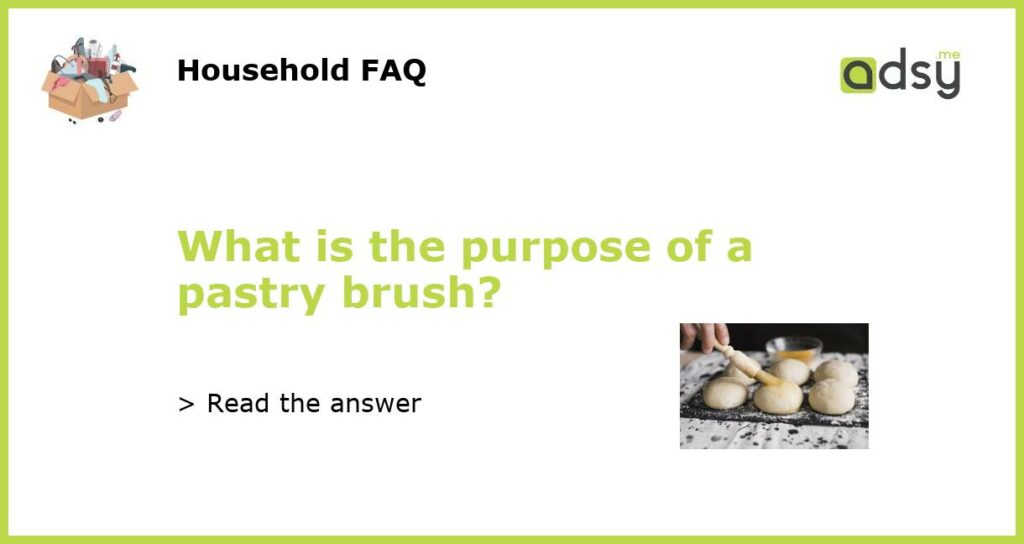A pastry brush: a versatile and essential tool in every baker’s kitchen
A pastry brush is an essential tool for every baker. Its purpose is to apply liquids, such as egg wash, melted butter, or glazes, onto dough, pastry, or other food items. This versatile tool is not limited to just baking—pastry brushes are also used in cooking to baste meat, poultry, or fish, or to brush oil onto vegetables for grilling. The brush’s bristles allow for even distribution of the liquid, ensuring a beautiful finish on your baked or cooked creations.
Key features and types of pastry brushes
Pastry brushes come in various sizes and materials, each suited to different tasks and preferences. The most common types of bristles used in pastry brushes are natural bristles, synthetic bristles, silicone bristles, and natural boar bristles.
Natural bristles are made from animal hair, typically pig bristles. They are known for their ability to hold and distribute liquids evenly. However, they do require more maintenance and cleaning compared to other types of bristles.
Synthetic bristles are made from nylon or polyester. They are durable, easy to clean, and more resistant to heat. However, they may not retain as much liquid as natural bristles.
Silicone bristles are heat-resistant and easy to clean. They are also non-absorbent, making them ideal for applying sauces or liquids that shouldn’t be absorbed into the bristles.
Natural boar bristles are often used in high-end pastry brushes. They are known for their softness and ability to hold and distribute liquids evenly, leaving a glossy finish.
How to use a pastry brush effectively
To get the most out of your pastry brush, follow these tips for effective and efficient use:
1. Choose the right size: Select a pastry brush that is suitable for the job. A larger brush is better for covering larger areas, while a smaller brush allows for more precision.
2. Properly prepare your pastry brush: Before using a new pastry brush, wash it with warm soapy water to remove any residue or chemicals. Rinse thoroughly and let it dry completely.
3. Dip and brush: Dip the brush into the liquid and brush it onto the dough, pastry, or food item using gentle strokes. Start from the center and work your way outwards for even distribution.
4. Clean after each use: To maintain the longevity of your pastry brush, clean it thoroughly after each use. For natural bristles, wash with warm soapy water and rinse well. For silicone bristles, simply wash with warm water and soap, or place it in the dishwasher if it is dishwasher-safe.
Other uses for pastry brushes
While the primary purpose of a pastry brush is for baking and cooking, there are other creative uses for this versatile tool:
1. Cleaning delicate items: Use a pastry brush to clean fragile or intricate items, such as decorative cake molds or kitchen gadgets with small crevices.
2. Paint application: Pastry brushes can be used for small painting projects or touch-ups. They work well with water-based paints and are handy for applying paint in tight corners.
3. Dusting: Use a clean pastry brush to softly dust off excess flour or sugar from cakes, pastries, or work surfaces.
4. Crafting: Pastry brushes can be used in various craft projects, such as applying glue or creating textured effects with paint or ink.
Remember, a pastry brush is a versatile tool that can be used not only for baking and cooking but also for a range of other tasks. Investing in a high-quality pastry brush will ensure you have a durable and reliable tool to assist you in the kitchen for years to come.






